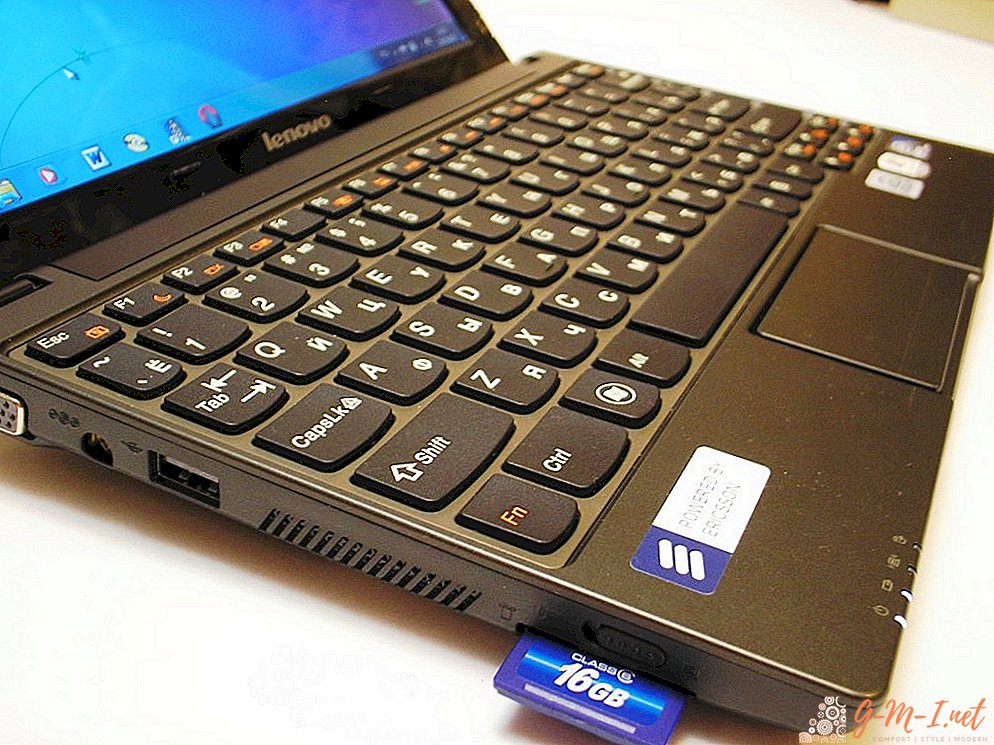 The development of technology has allowed the use of memory cards in almost all versions of computer technology. The laptop was no exception, various options for removable drives were also developed for it. However, sometimes users have questions during the operation of computer equipment. In our article, we will try to consider the most common problems and suggest ways to resolve them.
The development of technology has allowed the use of memory cards in almost all versions of computer technology. The laptop was no exception, various options for removable drives were also developed for it. However, sometimes users have questions during the operation of computer equipment. In our article, we will try to consider the most common problems and suggest ways to resolve them.
Before you understand the causes of a malfunction, make sure that the card is connected correctly - this may be the reason. To do everything correctly, just read the instruction manual. If for some reason it is not available, use the following action plan:
- Turn on the laptop and log in to the desktop in user mode.
- After that, carefully inspect the equipment body, you will need to find a special narrow hole about 2.5 cm long. Usually it is on the bottom of the front panel with various connectors.
- If your card is adapted for entry, just insert it into the appropriate slot. When using Micro SD, you must purchase a special adapter or adapter. After that, insert the card into the adapter connector, and place it in the slot on the laptop.
- After that, the system should automatically issue an alert about a new connected device. If this does not happen, go to the appropriate section through “My Computer”.
- Plug in your antivirus to check for viruses and malware. After diagnosis, you can open the drive for future use.

After performing these manipulations, the technician must recognize the drive and use it to save data, as well as work with them. If you did everything correctly, but this did not solve the problem, there may be hidden problems with the equipment. We will discuss this later.
Important! In advance, specify this parameter of the laptop, if you want to use a memory card. Some models may not support this format at all - this should be considered when choosing.
With the consistent execution of all actions, users should not have problems. However, if your laptop could not recognize the external media, there may be a system malfunction or mechanical damage. The most common types of malfunctions are:
- Damage to the slot into which the memory card is inserted. In some cases, the sensors responsible for recognizing the device may be malfunctioning.
- Bad condition of the drive, its damage or breakdown of chips and microcircuits.
- Defeat laptop viruses and malware. May lead to malfunctioning of standard programs and applications.
- Drive format does not fit. There are various models; make sure you are compatible with your laptop in advance.
- It is possible that the settings in the system are incorrectly set and automatic recognition is disabled.

Most often, the reason is errors in the connection and settings. They can be solved independently without outside help. For more complex types of malfunctions, you should seek help from a specialized service center.
Attention! For a free diagnosis and troubleshooting, keep the warranty card and do not repair or replace components yourself.
The algorithm of actions in this situation will directly depend on the type and nature of the problem. To solve the problem, try the following action plan:
- Restart the system for automatic diagnostics, reinsert the drive into the slot.
- If necessary, buy a special adapter or adapter for connecting via USB.
- In the settings, set the value for automatic start and recognition of the memory card. Use the standard path to the desired file.
- Run an anti-virus system scan to diagnose and fix various software lesions.
The reasons for the malfunctions and the algorithm for correcting them will help you quickly figure out why the laptop does not see the memory card.



Leave Your Comment